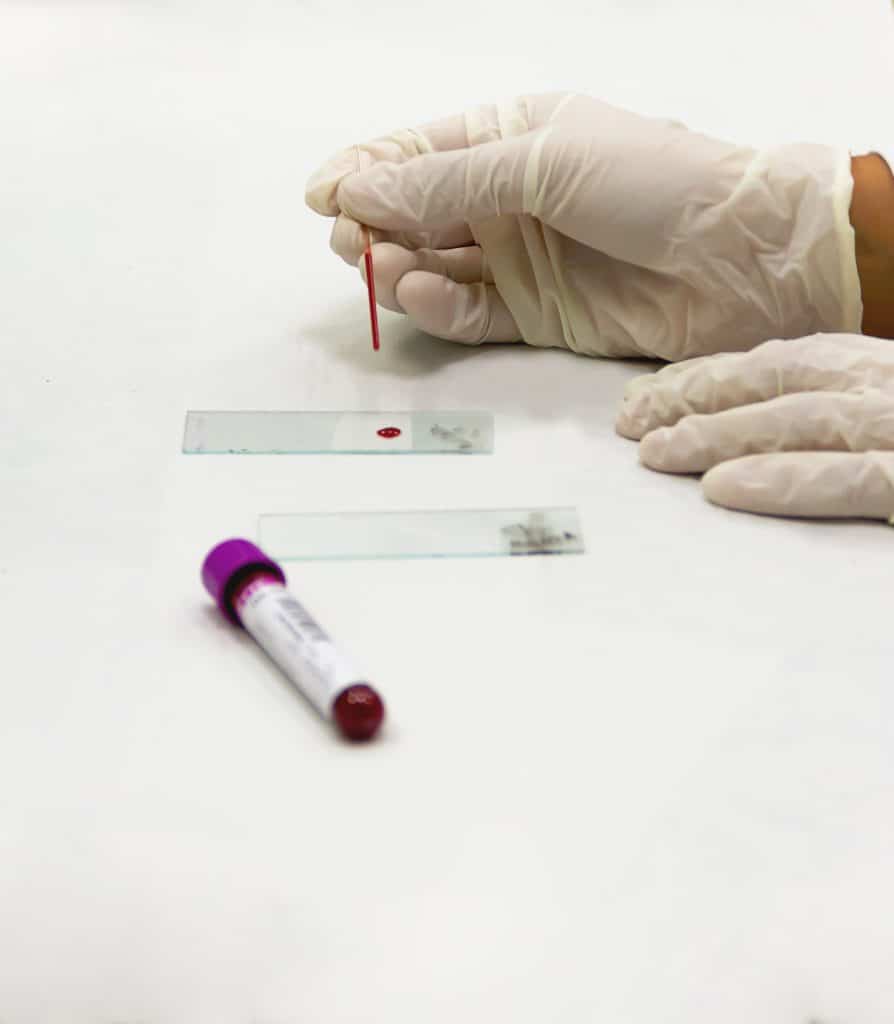Step 1: Prohibited Animals
Step 2: Vaccinations
Step 3: Microchip
If your dog or cat will be coming to Hawaii from Guam, Australia, New Zealand, or the British Isles (England, Scotland, Wales, Northern Ireland, Republic of Ireland, Isle of Man, Bailiwick of Jersey, and Bailiwick of Guernsey), you can skip the FAVN test completely.
Tip: The countries listed above have very low or no cases of rabies due to strict laws and as such as exempt from this step.
If your pet is coming from Guam, an additional affidavit must be completed.

What is the OIE-FAVN test for bringing your pets to Hawaii?
The OIE-FAVN test is a blood test that measures your pet’s immune system response to the rabies vaccine, to see if enough antibodies are being produced after vaccination.
If your pet meets the qualifications of a guide dog or service dog, this test must be done after 12 months of age to meet the Department of Agriculture’s requirement. For all other dogs and cats, there is no age requirement.
After your pet receives its second rabies vaccination (as described in Step 3), wait at least 21 days before bringing your pet back to the veterinarian to have a blood sample taken for the OIE-FAVN test.
This will give your pet’s body enough time to develop antibodies in response to the vaccination, making it more likely that your pet will pass the OIE-FAVN test.
How to get your to pet pass the FAVN blood test?
In order to pass the test, your pet’s blood sample must show an antibody response that is greater than or equal to 0.5 IU/ml. Once your pet passes the OIE-FAVN test, that test result remains valid for 3 years.
Before you bring your pet to the veterinarian to have a blood sample taken, determine which approved lab you’ll be using to test your pet’s blood sample.
If you’re a beneficiary of the U.S. Department of Defense, you have the option of saving a little money (and possibly some time) by using the DOD Food Analysis and Diagnostic Laboratory in Texas.
Otherwise, you must use the Kansas State University Veterinary Diagnostic Laboratory. Once you know which lab you’ll be using, download and print the necessary forms for that lab.
Requirements for the different FAVN testing labs
Kansas State University (KSU) lab:
- KSU submission instructions
- KSU submission form: Print one copy for each pet you have. Don’t fill it out — your veterinarian will do that later.
Department of Defense (DOD) lab:
- DOD submission instructions
- DOD submission form: Print one copy for each pet you have. Don’t fill it out — your veterinarian will do that later.
- DOD CDC permit: This is necessary only if you will be sending your pet’s blood sample from outside the United States. Print one copy for each pet you have.
When you call to make the appointment with the veterinarian to have your pet’s blood sample taken, offer to provide them with the lab’s submission instructions and submission form so they can be reviewed before your appointment.
Many veterinarians are familiar with the process involved in submitting blood samples for OIE-FAVN testing, but some may want to review the details beforehand.
If you will be using the Department of Defense lab, you must prepay the lab fee by submitting payment with your pet’s blood sample. But if you will be using the Kansas State University lab, ask your veterinarian if you should come to your appointment with prepayment, or if they’d rather add the fee to the bill for your appointment (and then KSU lab will bill the veterinarian).
Tip: If you don’t prepay KSU, this will not delay the processing of your pet’s blood test.
Here are the lab fees and prepayment options for both approved laboratories:
Kansas City University (KSU) lab
- KSU fee
- KSU prepayment options: Make separate prepayments for each pet you have.
- KSU credit card authorization form: Complete and print this form only if you plan to prepay with a credit card. Use separate forms for each pet you have.
Department of Defense (DOD) lab
- DOD fee
- DOD prepayment options: See DOD submission instructions. Making one full payment for multiple pets is OK.
- DOD credit card authorization form: Complete and print this form only if you plan to prepay with a credit card. Using one form to make one full payment for multiple pets is OK.

What to bring with you to your veterinarian appointment
- Submission instructions for the lab you’ll be using
- Submission form for each pet (don’t fill it out — your veterinarian will do that)
- Filled-out credit card authorization form or other type of prepayment of the lab fee (if applicable), sealed inside a large Ziploc bag
- CDC permit (necesssary only if you are using the DOD lab and are sending the blood sample from outside the U.S.)
- Proof of your Department of Defense beneficiary status (if you are using the DOD lab)
What to do during your veterinarian appointment
- Give your veterinarian the submission instructions.
- If you are using the DOD lab, show your veterinarian proof of your Department of Defense beneficiary status.
- Have your veterinarian fill out one submission form for each pet. They can do this online and then print it out, or they can fill out the form you brought by typing on it or printing neatly in black ink .
- Make sure your veterinarian signs the submission form in ink.
- On the form, where it asks for the pet’s destination, make sure it says “HAWAII” so that the test results will be sent directly to Hawaii’s Department of Agriculture, as required.
- If you are prepaying the lab fee, give your veterinarian your completed credit card authorization form or other type of prepayment, sealed inside a large Ziploc bag.
- If you are using the DOD lab and are sending the blood sample from outside the U.S., give your veterinarian the CDC permit.
What to do after your veterinarian appointment
- Wait 3-5 weeks (or possibly longer) for the laboratory to process your pet’s blood test. According to the DOD lab’s instructions, “results can be expected within 3 weeks after receipt of the sample(s).” Visit KSU lab’s website to find out their current turnaround time.
- After 3-5 weeks, check with your veterinarian’s office to find out if they’ve received a copy of the test results yet.
- After your veterinarian receives a copy of the test results, get a copy for your records. To “pass” the test, your pet’s results must be greater than or equal to 0.5 IU/ml. If your pet does not pass the test, discuss with your veterinarian how you should proceed.
- Check the copy of your pet’s test result for the date of the test.
- Three weeks after the date of the test, check online to see if your pet’s results have arrived at Hawaii’s Department of Agriculture.
- Once you see your pet’s results listed on the Department of Agriculture’s website, print out that webpage for your records.
- Look in the “5-Day-or-Less Eligibility Date” column of your pet’s test result on the Department of Agriculture website. This is the earliest date you can bring your pet to Hawaii without having it quarantined. (This date is equal to 120 days after the lab received your pet’s blood sample.)
Step 5: Flight Booking
Step 6: Kennel
Step 7: Import Form
Step 8: Health Certificate
Step 9: Flight Prep
Step 10: Moving Day